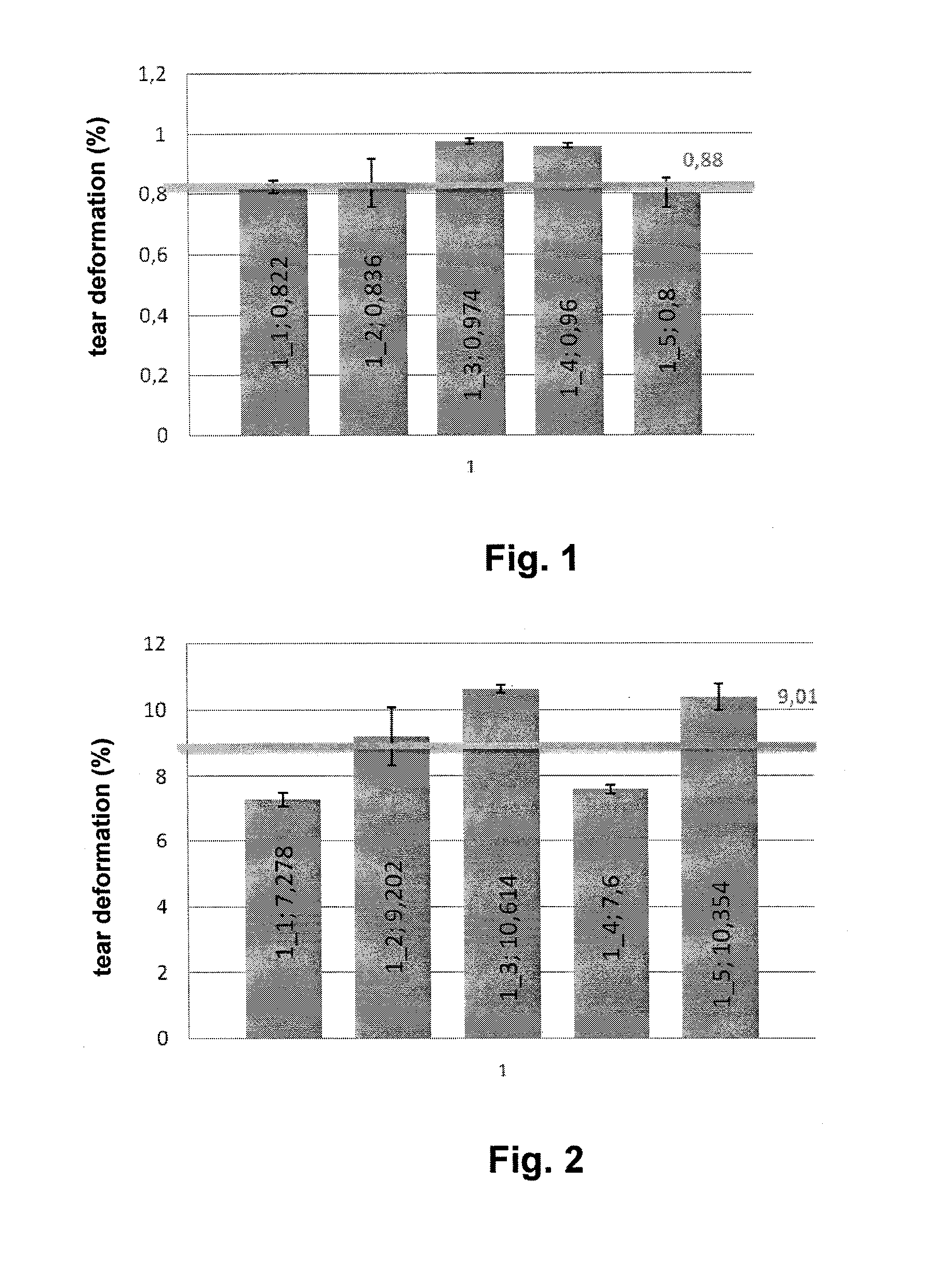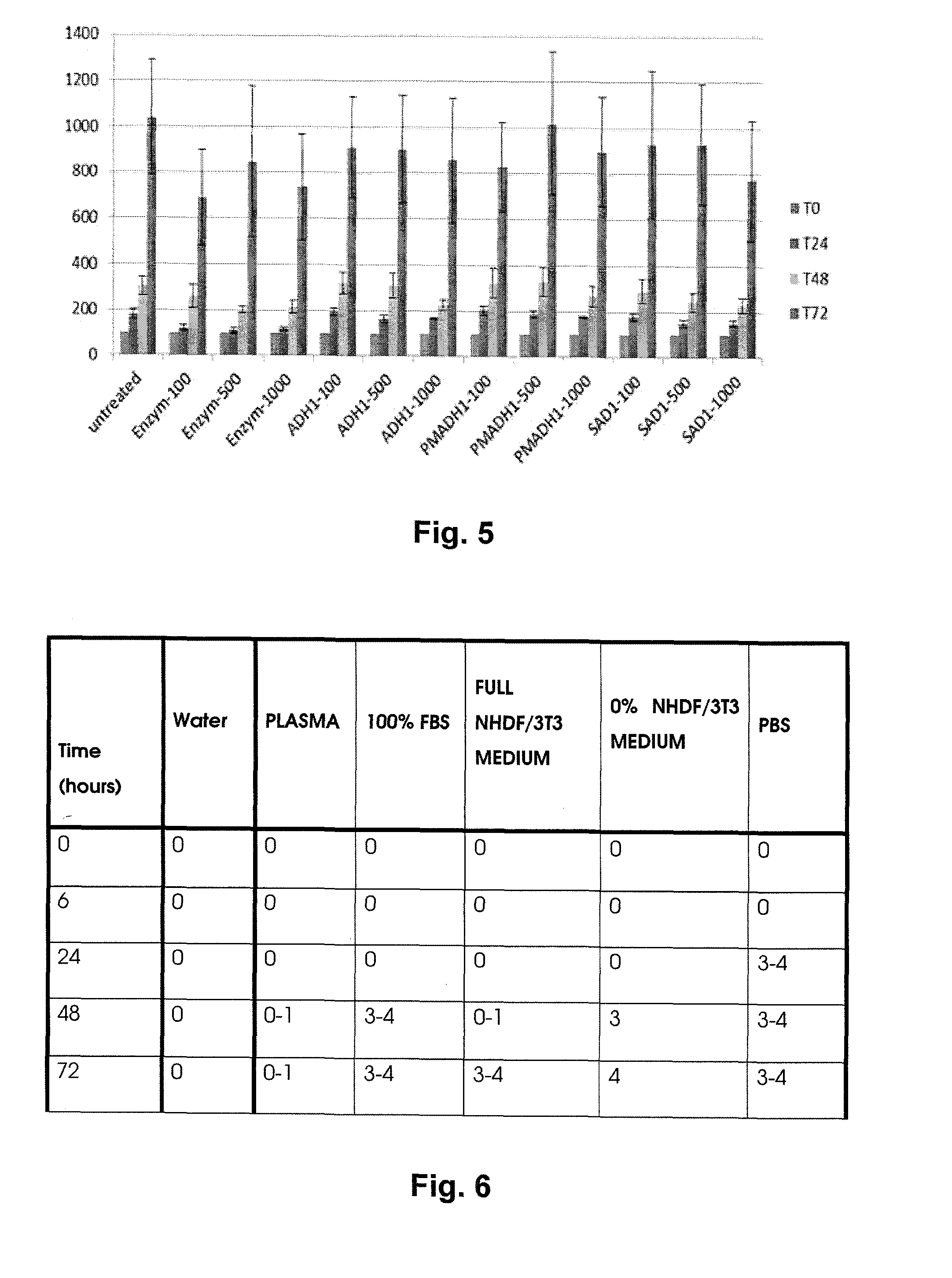Endless Fibres on the Basis of Hyaluronan Selectively Oxidized in the Position 6 of the N-Acetyl-D-Glucosamine Group, Preparation and Use Thereof, Threads, Staples, Yarns, Fabrics Made Thereof and Method for Modifying the Same
a technology of hyaluronan and endless fibres, which is applied in the field of textile processing of endless fibres, can solve the problems of not being able to absorb the dihydrazide cross-linking bath, and exhibiting a significantly longer lasting insolubility
- Summary
- Abstract
- Description
- Claims
- Application Information
AI Technical Summary
Benefits of technology
Problems solved by technology
Method used
Image
Examples
example 1
Preparation of a Monofilament by Extruding the Initial Solution into the Mixture Containing 80% of Propane-2-Ol, 16% of Lactic Acid and 4% of Water
[0057]2.5 grams of hyaluronan oxidized in position 6 of its N-acetyl-D-glucosamine group having MW of 476 kDa were being dissolved in demineralized water for 16 hours under laboratory temperature in order to provide a clear homogenous viscous solution with the concentration of 5%. The solution was transferred into a cylinder extruder and made free of bubbles.
[0058]The extruder consisting of a cylinder and a piston was inserted into a precise linear metering device and the value of 200 μl / min was set for the extrusion rate. The solution was extruded through a spinning mono nozzle having the outlet diameter of 500 μm into the coagulation solution containing 16% of lactic acid, 80% of propane-2-ol and 4% of water. Afterwards, the formed filament was being continually wound up in pure isopropanol under room temperature for 4 hours. After the ...
example 2
Preparation of a Monofilament by Extruding the Initial Solution into the Mixture Containing 80% of Ethanol, 16% of Lactic Acid and 4% of Water
[0060]1.5 grams of hyaluronan oxidized in position 6 of its N-acetyl-D-glucosamine group having MW of 662 kDa were being dissolved in demineralized water for 12 hours under laboratory temperature in order to provide a clear homogenous viscous solution with the concentration of 4%. The gel-like solution was centrifugally made free of bubbles. The extruder consisting of a cylinder and a piston was inserted into a precise linear metering device and the value of 200 μl / min was set for the extrusion rate. The solution was extruded through a spinning mono nozzle having the outlet diameter of 500 μm into the coagulation solution containing 16% of lactic acid, 80% of denatured ethanol and 4% of water. Afterwards, the formed filament was being continually wound up in denatured ethanol (denatured with 10% of propane-2-ol) for 4 hours and then dried unde...
example 3
Preparation of a Monofilament by Extruding the Initial Solution into the Mixture Containing 60% of Propane-2-Ol, 32% of Lactic Acid and 8% of Water
[0062]0.8 grams of hyaluronan oxidized in position 6 of its N-acetyl-D-glucosamine group having MW of 631 kDa were being dissolved in demineralized water for 12 hours under laboratory temperature in order to provide a clear homogenous viscous solution with the concentration of 5%. The gel-like solution was centrifugally made free of bubbles. The extruder consisting of a cylinder and a piston was inserted into a precise linear metering device and the value of 200 μl / min was set for the extrusion rate. The solution was extruded through a spinning mono nozzle having the outlet diameter of 500 μm into the coagulation solution containing 32% of lactic acid, 60% of propane-2-ol and 8% of water. Afterwards, the formed filament was being continually wound up in propane-2-ol for 4 hours and then dried under the pressure, which had been reduced to ...
PUM
| Property | Measurement | Unit |
|---|---|---|
| temperature | aaaaa | aaaaa |
| temperature | aaaaa | aaaaa |
| temperature | aaaaa | aaaaa |
Abstract
Description
Claims
Application Information
 Login to View More
Login to View More - R&D
- Intellectual Property
- Life Sciences
- Materials
- Tech Scout
- Unparalleled Data Quality
- Higher Quality Content
- 60% Fewer Hallucinations
Browse by: Latest US Patents, China's latest patents, Technical Efficacy Thesaurus, Application Domain, Technology Topic, Popular Technical Reports.
© 2025 PatSnap. All rights reserved.Legal|Privacy policy|Modern Slavery Act Transparency Statement|Sitemap|About US| Contact US: help@patsnap.com



